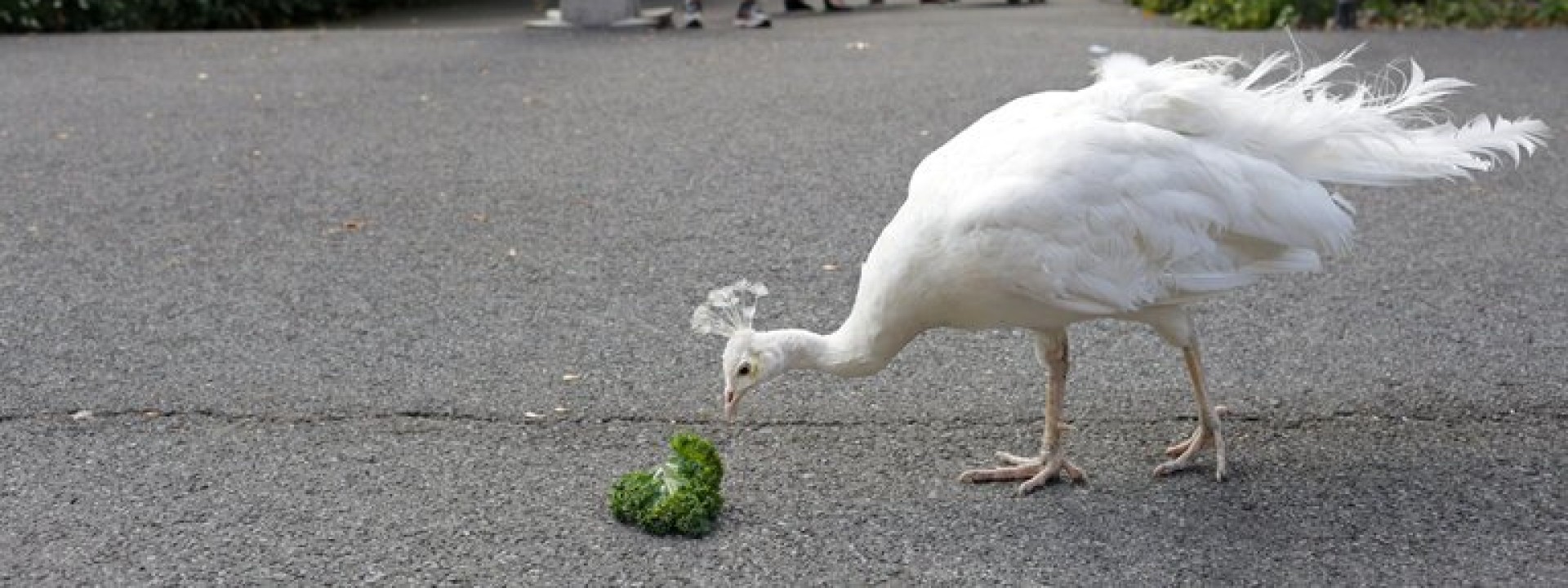Construction Project at a Cathedral: A New Home for Its Peacocks


As with many architectural projects, there was a competition first.
There was a jury. There were finalists — 11 in all.
The jury chose not one but two designs, and asked if they could be combined.
All this thinking, planning and drawing-board time was not for a big new skyscraper. It was for a home for three peacocks.
The three, Jim, Phil and Harry, live on the 13-acre grounds of the Cathedral Church of St. John the Divine in Manhattan. They take the world on their terms. They do not like to be touched but they like to be watched, so much so that they have been known to station themselves in a doorway of the adjacent Cathedral School. Such showoffishness takes longer than the animated peacocks took in the “brought to you in living color” promos on television, back when living color was still a novelty.
Peacocks have lived on the cathedral grounds since the 1980s, ever since the Bronx Zoo donated some chicks. Jim, Phil and Harry arrived about 15 years ago.
“They give a slight magical quality to our gardens,” said Bishop Andrew M.L. Dietsche, who lives on the grounds of the cathedral.

They also give the gardens a squawking quality in mating season. They can be “very, very loud,” he said, adding that he and the other church officials who live on the grounds “are very familiar with it.”
Jim was named for the Very Rev. James A. Kowalski, who stepped down as the dean of the cathedral several months ago. Harry was named for a former dean, the Very Rev. Harry H. Pritchett Jr., and Phil for Phillip Foote, the former head of the Cathedral School.
But they can be elusive. For an inspection of the new structure on Friday, Robert Finn, the manager of the cathedral’s soup kitchen, ended up doubling as a peacock wrangler, luring Harry with a handful of kale.
The interim dean, Bishop Clifton Daniel III, arrived for the inspection with a handful of almonds for the peacocks and a dry sense of humor for the people trailing along.
“There’s a pigeon named for me,” Dean Daniel said.
It turned out that he was not kidding — there really is. Lisa A. Schubert, the cathedral’s vice president for programming and external affairs, produced a cellphone with a photo.

So the obvious question was asked: Does Clifton the pigeon get along with the peacocks?
“You would have to ask them about that,” Dean Daniel said, almost straight-faced.
But Clifton was not available for an interview. Ms. Schubert said the reason was medical: He was in isolation at an avian center after treatment for lead poisoning, a vitamin B deficiency and an inner ear problem. She said she had rushed him off in August after noticing that he was having trouble walking.
Newsletter Sign Up
The cathedral peacocks’ residence since 2002 has been a rather unstylish wooden structure on the south side of the cathedral. The competition for the new shelter began in 2015 and was open to the 140 architects of the firm Ennead, itself a descendant of Polshek Partnership Architects, which had worked on large-scale projects at the cathedral since the 1990s.
The jury included Susan T. Rodriguez, who heads the firm’s design process on cathedral projects; Guy Maxwell, a lifelong birder who is the managing partner for the firm’s projects at the cathedral; Dr. Christine Sheppard of the American Bird Conservancy; Lorelei Tibbetts of the Center for Avian and Exotic Medicine in Manhattan; two real-estate developers, Dean Amro and Thomas Brodsky, who had overseen the new apartment building on the north end of the cathedral grounds; and three officials from the cathedral.
“We spent a few hours actually deliberating, if you can believe that,” Mr. Amro said. “Architecturally, the feeling was that this was respectful of the cathedral, for giving a nod to the shape of the windows.” He said that the lightweight plastic walls of the structure were “reminiscent of feathers.”

The two winners, Mr. Lewandowski and Paul Scrugham, worked together to marry form and function in the final design.
“We were given basic parameters,” said Ryan Lewandowski, one of the winners. “My design focused on referencing the cathedral architecture. The other design focused on functional aspects — how you clean it out.” The tubular frame “allows adaptability for where you place perches,” he said.
Kevin Seymour, an architect from Ennead who is the project manager for the firm’s work at the cathedral, told Dean Daniel that a step would be installed to make it easier for the peacocks to enter and leave their new home.
“Because they have arthritis,” Dean Daniel said.
They are not so young anymore — they probably have more yesterdays than tomorrows. But what about encounters in the present: Are they friendly?
“Semi,” Dean Daniel said, “especially if you have an almond in your hand.”
Not this time, though. Harry was not interested in Dean Daniel’s almonds.
“He’s too full of kale,” Dean Daniel said.


